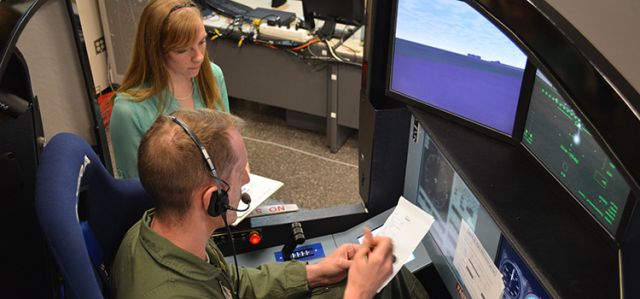Experimental and Computational Analysis of High Angle of Attack Perching Maneuvers
Document Type
Conference Paper
Publication Date
6-2012
Publication Source
30th AIAA Applied Aerodynamics Conference
Abstract
Experimental and numerical investigations are performed in an effort to elucidate the necessity of inclusion of three-dimensional effects in the determination of lift and drag forces during rapid pitching and impulsively started maneuvers to/at high angle of attack. Following the guidelines of the NATO RTO AVT 202 test case, wind tunnel data was acquired for pure pitching cases from 0 to 45 degrees for an AR 4 flat plate using the University of Dayton Low Speed Wind Tunnel (UD-LWST) and compared to a 2D Discrete Vortex Method (DVM).
Results show that the DVM compares well to the wind tunnel data in the pre-stall region before the deformation of the wake at the trailing edge by the trailing edge vortex and show similar trends in the post-stall region. It is believed that these differences in post-stall occur due to 3D effects and discussion is provided to support this assertion. The DVM is also used to compare results of a 45 degree linearly accelerated impulsive start case to data obtained in an experiment at the AFRL Horizontal Free-surface Water Tunnel under conditions identical to the simulation. Comparing these results again demonstrates the that DVM matches well to the water tunnel data except in a region where it is believed 3D instabilities are responsible for effects in the flowfield that are not adequately modeled by the 2D DVM.
ISBN/ISSN
978-1-62410-185-4
Copyright
Copyright © 2012, American Institute of Aeronautics and Astronautics
Publisher
American Institute of Aeronautics and Astronautics
Place of Publication
New Orleans, LA
eCommons Citation
Lego, Zachary; Altman, Aaron; and Gunasekaran, Sidaard, "Experimental and Computational Analysis of High Angle of Attack Perching Maneuvers" (2012). Mechanical and Aerospace Engineering Faculty Publications. 112.
https://ecommons.udayton.edu/mee_fac_pub/112
COinS




Comments
Permission documentation is on file.